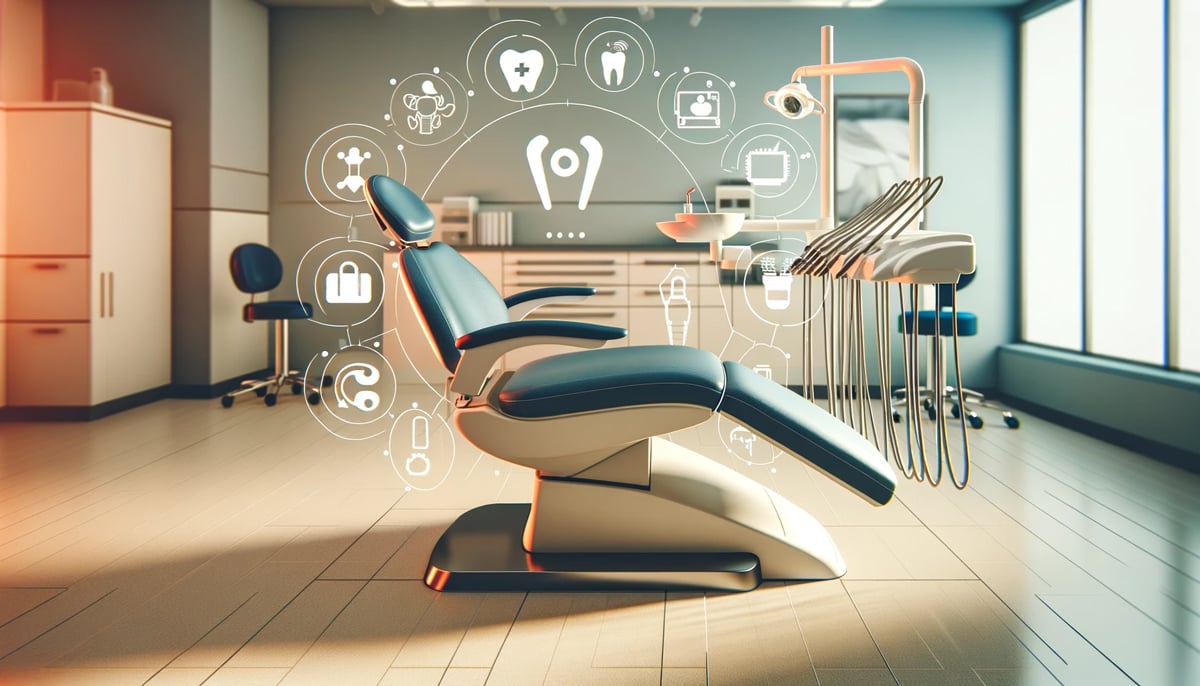Hello, I’m Dr. Michael. I’ve witnessed the transformation of dental chairs into technologically advanced, safety-centric tools.
This article delves into the safety features of modern dental chairs, highlighting their significance in enhancing patient care and comfort.
Understanding the Importance of Dental Chair Safety
The safety of patients and practitioners in the dental office hinges significantly on the design and functionality of the dental chair.
Contemporary dental chairs are not just furniture; they are complex, integral parts of dental procedures that ensure patient comfort and practitioner efficiency.
Safety in dental chairs is not just about preventing physical harm; it’s about creating an environment where patients feel secure and relaxed and practitioners can work with precision.
The Evolution of Safety Features in Dental Chairs
Tracing back to the 19th century, dental chairs have evolved from rudimentary wooden structures to sophisticated, ergonomic designs.
Initially, the focus was more on patient comfort than safety.
However, with technological advancements and increased awareness about occupational hazards in dentistry, the emphasis gradually shifted towards incorporating safety features.
Today’s chairs come equipped with emergency stop buttons, adjustable headrests, and programmable positions to prevent sudden, uncontrolled movements that could lead to injuries.
Also read Types of Dental Chairs
Essential Safety Features in Contemporary Dental Chairs
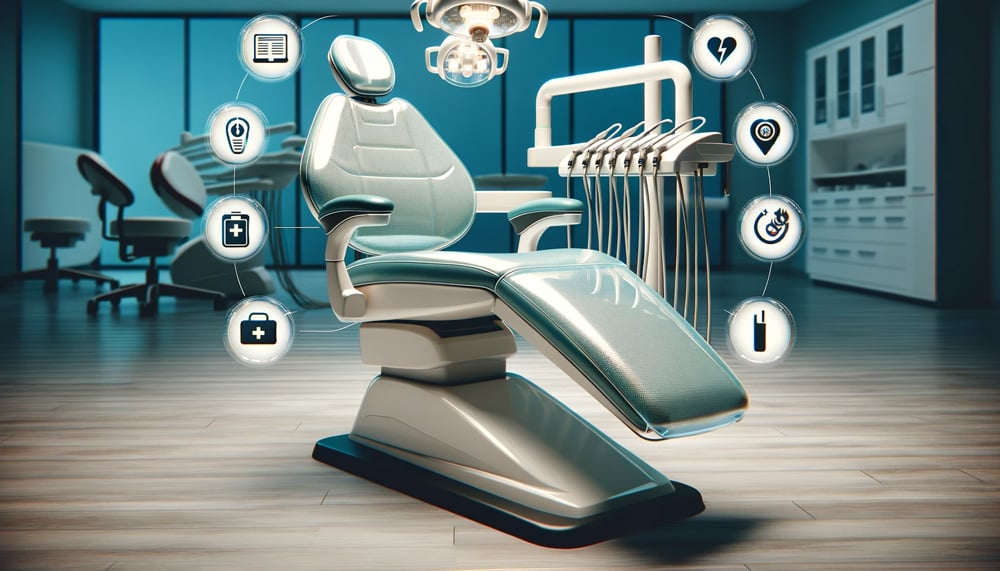
Modern dental chairs are marvels of engineering, designed with patient safety and comfort in mind.
Features like adjustable height and recline angles, stable bases, and soft, antimicrobial upholstery not only enhance patient comfort but also reduce the risk of falls and cross-contamination.
Furthermore, the integration of ergonomic design helps prevent musculoskeletal disorders, a common issue among dental professionals.
Innovations Enhancing Dental Chair Safety
In the realm of dental chair safety, the future is now.
Cutting-edge chairs are equipped with sensor-based systems that detect and prevent unintentional movements and AI-integrated technologies that adapt to the specific needs of each patient.
These advancements not only elevate safety standards but also streamline the dental procedure, making it more efficient and less stressful for both patient and practitioner.
How Modern Safety Features Benefit Patients
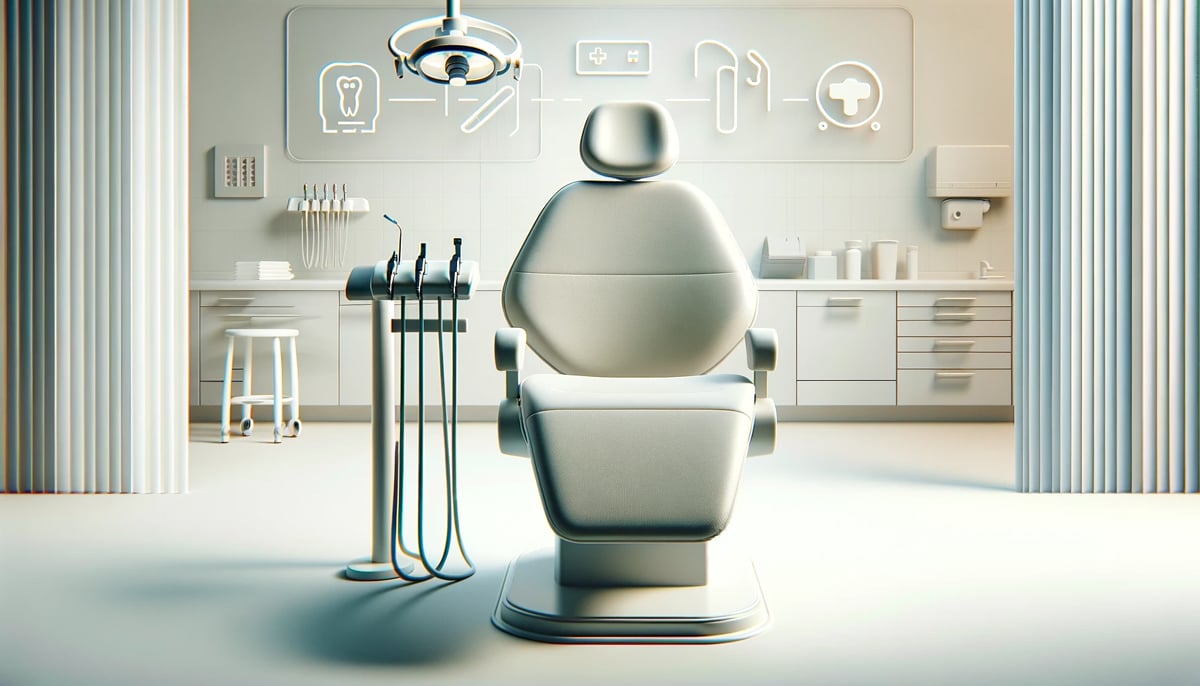
The core aim of these innovations is patient well-being.
Features like seamless transitions between positions and gentle movements reduce anxiety and discomfort, especially for patients with mobility issues or dental phobias.
This patient-centric approach in chair design plays a crucial role in improving the overall dental care experience.
Advantages of Safety Features for Dentists and Dental Staff
For dental professionals, these safety features translate into reduced physical strain and enhanced procedural efficiency.
Ergonomically designed chairs allow dentists to maintain a healthy posture, reducing the risk of chronic back pain and other occupational hazards.
Additionally, features like programmable positions and easy-to-clean surfaces save time and effort, allowing dentists to focus more on patient care.
Regulatory Standards Governing Dental Chair Safety
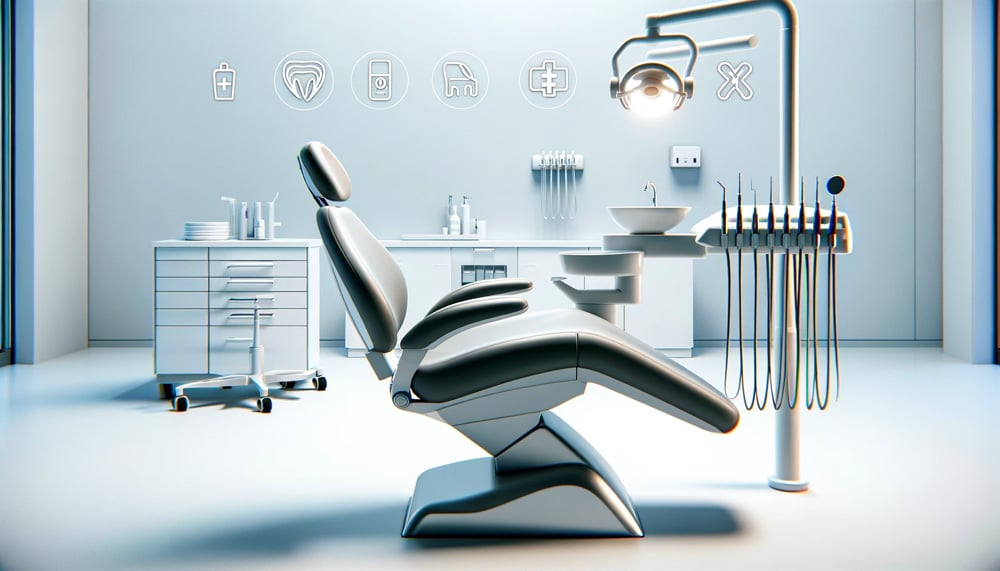
Safety in dental equipment is not just about innovation; it’s also about compliance.
Dental chairs must adhere to stringent safety standards set by health authorities and regulatory bodies.
These standards ensure that every dental chair in the market is tested for stability, electrical safety, and hygiene.
Compliance with these regulations is not just a legal requirement but a commitment to patient and practitioner safety.
Keeping Dental Chairs Safe and Functional
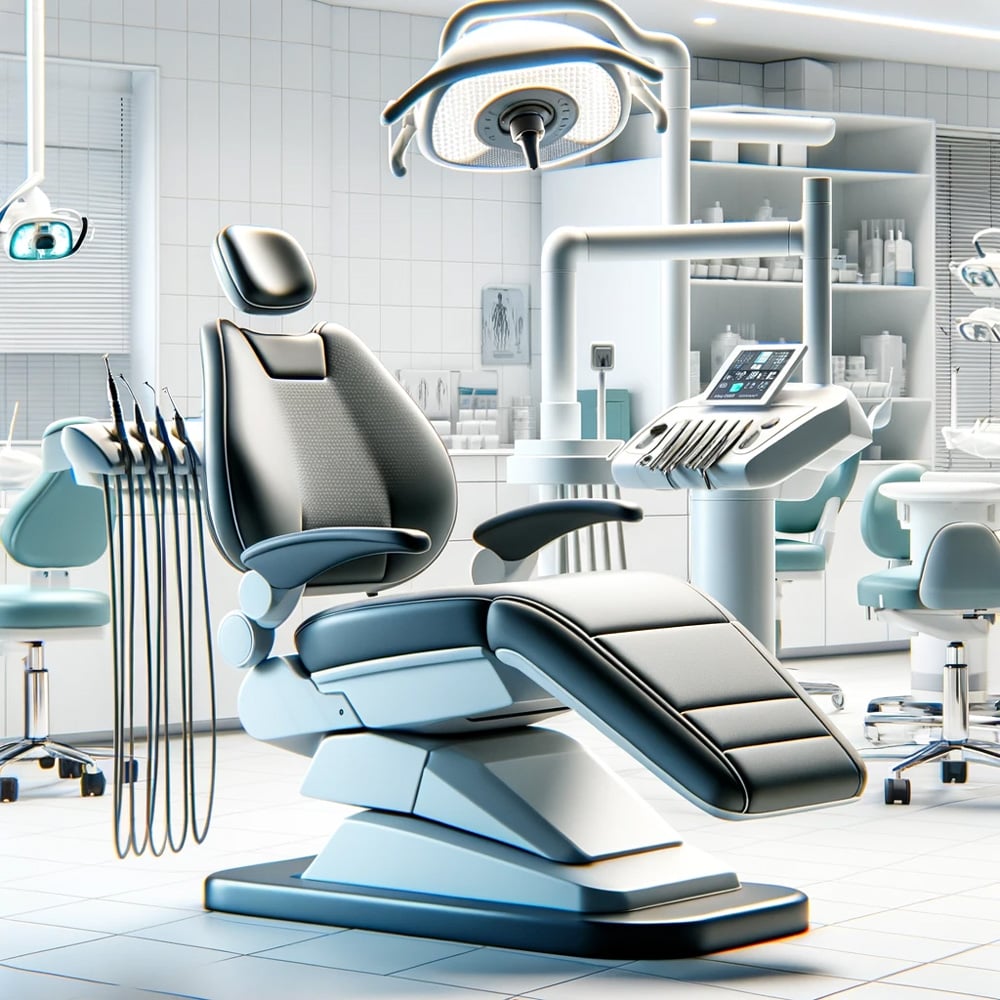
The longevity and effectiveness of a dental chair’s safety features depend largely on regular maintenance.
Routine checks and servicing not only extend the life of the chair but also ensure that all safety mechanisms are functioning correctly.
Dental practices should establish a maintenance schedule that includes cleaning, inspection, and prompt repair of any wear and tear.
The Future of Dental Chair Safety
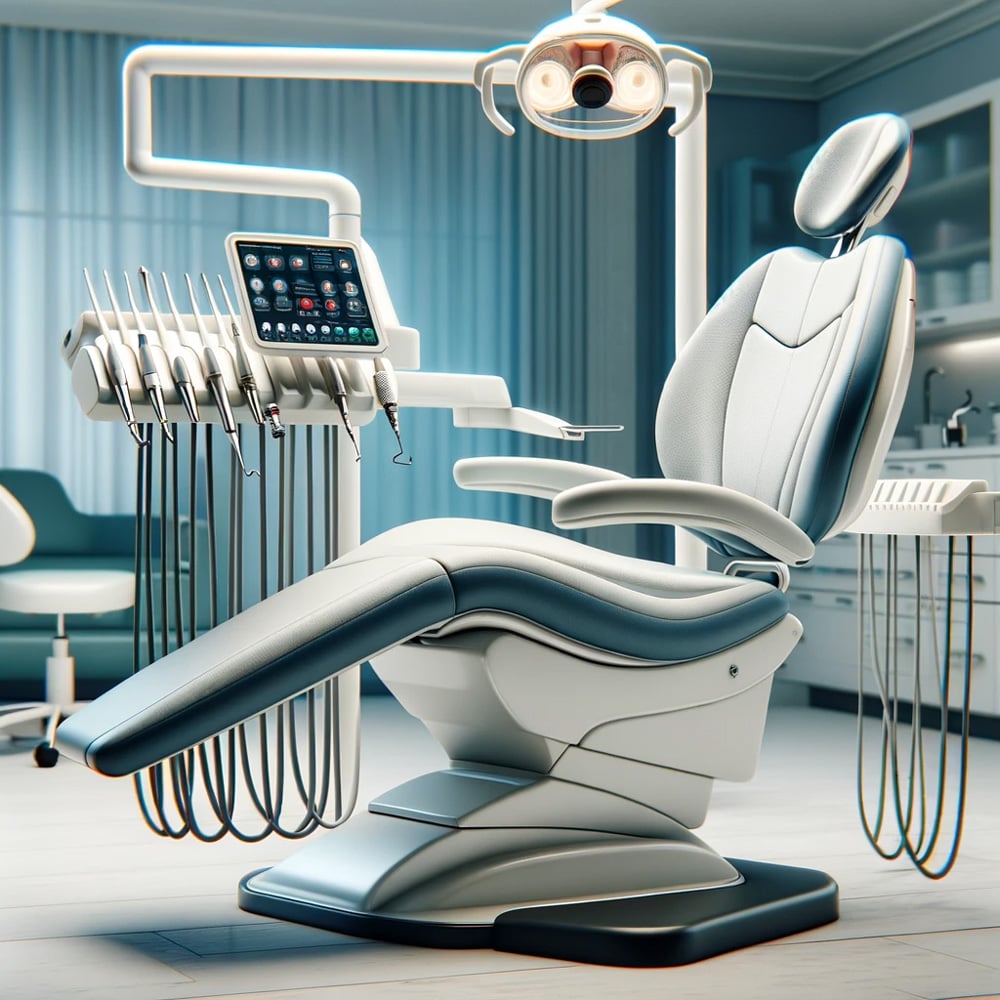
As we look towards the future, it’s clear that the evolution of dental chair safety is an ongoing journey.
With advancements in technology and a deeper understanding of ergonomics, we can expect even more innovative features that prioritize patient and practitioner safety.
The aim is not just to follow trends but to set new standards in dental care.
In conclusion, the modern dental chair is a testament to the advancements in dental technology and ergonomics.
As a dental professional, I understand the critical role these chairs play in ensuring the safety and comfort of both patients and practitioners.
Embracing these innovations is not just about upgrading equipment; it’s about committing to the highest standards of dental care.
FAQs about Dental Chair Safety Features
-
What are the key safety features of modern dental chairs?
Modern dental chairs include ergonomic designs, emergency stop buttons, adjustable headrests, and programmable positions for enhanced safety.
-
How do safety features in dental chairs benefit patients?
Safety features in dental chairs provide stability and comfort and reduce anxiety, especially for patients with mobility issues or dental fears.
-
Why are ergonomic designs important in dental chairs?
Ergonomic designs in dental chairs help prevent musculoskeletal disorders in dental professionals and enhance patient comfort during procedures.
-
Are there any regulatory standards for dental chair safety?
Yes, dental chairs must comply with safety standards set by health authorities, ensuring stability, electrical safety, and hygiene.
-
What advanced technologies are being used in dental chairs?
Advanced dental chairs are incorporating sensor-based systems and AI technologies for enhanced safety and efficiency in dental procedures.
-
How often should dental chairs be maintained for safety?
Regular maintenance, including routine checks and servicing, is essential to ensure the safety and functionality of dental chairs.
-
Can dental chair safety features reduce dental anxiety?
Yes, features like gentle movements and comfortable positioning in dental chairs can significantly reduce dental anxiety in patients.
-
How do safety features impact the work of dental professionals?
Safety features in dental chairs reduce physical strain for dentists and increase procedural efficiency, enhancing overall patient care.

